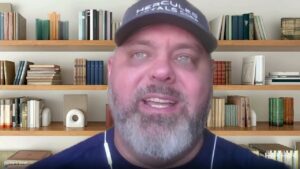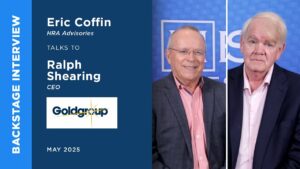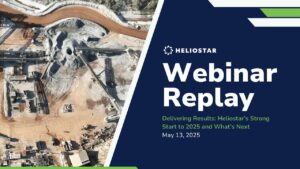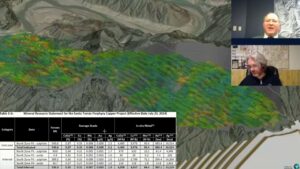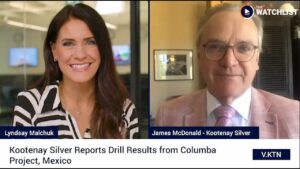Vancouver, British Columbia – Silver Bull Resources, Inc. (TSX: SVB, NYSE MKT: SVBL) (“Silver Bull”) is pleased to provide preliminary results for its metallurgical test program completed on the silver and zinc mineralization at the Sierra Mojada project located in the state of Coahuila, Northern Mexico. The results of this news release pertain to a series of bottle roll tests on the silver mineralization from the “Centenario Zone” and pyro-metallurgical tests using a rotary kiln from the “Red Zinc Zone.”
Highlights include;
- Silver recoveries from the Centenario Zone of up to 89% with an average recovery of 83% silver across a variety of silver grade ranges.
- The highest silver recoveries were achieved at a 75 micron grind using a cyanide strength of 5 grams per liter over a 24 hour time period.
- Roasting of the red zinc ore achieved up to 98.9% removal of zinc from the ore via fuming – producing an almost pure zinc oxide concentrate (approximately 80% zinc concentrate) at a 1,300 degrees Celsius roasting temperature.
Summary of Silver Metallurgical Test Work
Testing on the silver ore at Sierra Mojada has been conducted by Kappes, Cassiday and Associates (“KCA”), Reno. Work has focused on cyanide leach recovery of the silver using “Bottle Roll” tests to simulate an agitation leach system common on many mine sites. Samples have been taken separately from drill core, mineralized outcrop, and trenches from the “Centenario”, “Fonteriza” and “Shallow Silver” Zones of the deposit and have been crushed and mixed to create either a “composite” sample representative of each of the 3 zones, or a series of composite samples based on the silver grade for each of the three zones.
The Centenario Zone is composed of a large silver oxide body hosted along the “Centenario” fault and represents approximately 1/3rd of the silver mineralization seen at Sierra Mojada. It is hosted along a buried east-west trending structure which lies parallel and 300m to the north of the “Sierra Mojada” fault — which hosts the Shallow Silver and Fonteriza Zones. The widest part of the mineralization in the Centenario Zone occurs at the intersection of the Centenario fault and a major north-south trending fault which cross cuts the entire deposit. Like the Shallow Silver Zone, a thick dolomite unit appears to be the favorable host rock for the mineralization, especially when immediately adjacent to fault zones. Drilling shows a high grade core of silver mineralization grading in excess of 400 g/t Ag and averaging >100 g/t Ag sitting within a lower grade large halo of silver mineralization < 100 g/t Ag.
A summary of the initial diagnostic leach tests results on six grade composites from the Centenario Zone is shown below.
| Sample ID | Grind size (mm) | NaCN concentration, (gpL) | Ag Grade (g/t) | Extracted Ag (g/t) | Extracted Ag, (%) | Leach Time, (hrs) | Consumption NaCN, kg/MT | Addition Ca(OH)2, kg/MT |
|---|---|---|---|---|---|---|---|---|
| 65442 | 0.075 | 5.00 | 172.36 | 153.44 | 89% | 24 | 2.45 | 2.00 |
| 65438 | 0.075 | 5.00 | 105.81 | 93.57 | 88% | 24 | 2.45 | 2.00 |
| 65444 | 0.075 | 5.00 | 103.99 | 82.11 | 79% | 24 | 1.89 | 2.00 |
| 65443 | 0.075 | 5.00 | 41.55 | 34.01 | 82% | 24 | 9.79 | 2.00 |
| 65437 | 0.075 | 5.00 | 43.34 | 35.44 | 82% | 24 | 2.45 | 2.00 |
| 65441 | 0.075 | 5.00 | 40.07 | 32.19 | 80% | 24 | 3.15 | 2.00 |
Preliminary observations from these results include;
- Silver recoveries generally show an increase with higher grade.
- 80% + recovery is seen in the lower grade silver ore.
- Varying levels of cyanide consumption (NaCN) are attributed to variable amounts of zinc and copper in the samples.
In addition to continuing tests assessing the silver recoveries via cyanidation, studies are also planned to see if the “SART” process (sulfidization, acidification, recycling and thickening) can be applied at the backend of the leaching circuit. If successful this may allow for the recycling of the cyanide in the silver leaching circuit — potentially lowering cyanide costs, as well as potentially recovering a portion of the zinc and copper we also see in the ore. The SART process has been used successfully at several full-scale mining operations including Newmont’s Yanancocha Mine in Peru, and more plants are currently under construction.
Summary of Zinc Metallurgical Test Work
Pyro-metallurgical test work on the zinc has been conducted at Hazen Research, Inc. (“Hazen”), Colorado. Samples have been taken from channel samples along the 1.5 kilometer strike length of the “Red Zinc Zone” and have been crushed and mixed to form a composite sample representative of the ore body. Initial tests have focused on roasting the ore in a rotary kiln to fume off the zinc and collect it as a zinc oxide concentrate. A summary of the results is shown below.
| Ore | Conditions | Sample Size (grams) | Zn Grade (%) | % Zn fumed from original feed |
|---|---|---|---|---|
| RZ | 1100°C, 3:1 C:Zn | 100 | 12.5 | 33.0 |
| RZ | 1200°C, 3:1 C:Zn | 100 | 12.5 | 86.9 |
| RZ | 1200°C, 4:1 C:Zn | 150 | 18.75 | 93.9 |
| RZ | 1300°C, 3:1 C:Zn | 100 | 12.5 | 98.9 |
Several preliminary observations can be made from these results;
- Zinc fuming shows an obvious increase in recovery with increasing temperature.
- A higher carbon to zinc ratio significantly increases zinc fuming at lower temperatures.
The roasting of the zinc ore aims to simulate a “Waelz Kiln”, a kiln which is used extensively to recycle zinc from steel dust and which regularly achieves recoveries in excess of 90%. In considering this process, the zinc resource at Sierra Mojada has a number of advantages; it lies in the state of Coahuila which is the largest coal producing state in Mexico and would provide the fuel to run the kiln, and it has a functioning railway right to site to allow for easy transport of coal to the site and of the zinc concentrate from the site without any significant build out costs. Additional tests are underway to establish zinc oxide precipitation parameters for the fumed zinc.
Tim Barry, President, CEO and director of Silver Bull states, “We are extremely pleased with these preliminary metallurgical test results for the silver and zinc mineralization. When we consider silver oxide deposits often have recoveries in the low 60% range, the results we see in the Centenario zone are exceptional. We are also very pleased that we have been able to achieve the +90% fuming of the zinc that we see with the Waelz kilning technique already used in the industry. This, combined with the fact that we have a functioning railway right to site is a serious positive for the “mineability” of the zinc at Sierra Mojada. Our goal is to put out a new resource update and have a viable flow sheet in place before the end of the first quarter of 2013. We will then look to take this project to the next level via a Preliminary Economic Assessment.”
Ongoing Metallurgical Activities
Silver: Tests are ongoing at KCA and results are expected from bottle roll tests on the “Shallow Silver” and “Fonteriza” Zones shortly. Once the preliminary program is complete, work will then move to focus on optimizing recovery versus economics looking at parameters such as head grade of the silver ore, grind size, and cyanide concentration.
Zinc: Tests remain ongoing at Hazen to assess the pyro-metallurgical recoveries on the zinc mineralization. With the preliminary results now complete, a series using a larger sample sizes will now be used to replicate the initial bench top results.
In addition to the pyro-metallurgical tests at Hazen, Silver Bull also has a full program underway at SGS Lakefield Research Ltd (“SGS”) to assess hydro-metallurgical recovery potential on the zinc through floatation, leaching, and dense media separation. Previous historical tests showed +80% recovery of the zinc forming concentrate grades of ~30% Zn on head grades containing +6% Zn.
About the Shallow Silver Zone: The “Shallow Silver Zone” is an oxide silver deposit (+/- zinc & lead), hosted along an east-west trending fracture-karst system set in a cretaceous limestone-dolomite sequence. At a 20g/t cutoff grade the Shallow Silver Zone and has a measured resource of 3.023 million tonnes at an average grade of 65.0 g/t for 6.343 million contained troy ounces of silver, an indicated resource of 38.560 million tonnes at an average grade of 50 g/t for 61.694 million contained troy ounces of silver, and an inferred resource of 6.491 million tonnes at an average grade of 45.0 g/t for 9.478 million contained troy ounces of silver. The mineralized body averages between 30m — 90m thick, up to 200m wide and remains open in all directions. Approximately 60% of the current 3.8 kilometer strike length is at or near surface before dipping at around 6 degrees to the east.
Zinc Exploration Target: In addition to the silver resource, Sierra Mojada also contains a significant “zinc oxide exploration target” which sits directly below and adjacent to the Shallow Silver Zone at its eastern end. The “Red” and “White” zinc zones have been identified through historical data containing 3,733 channels and 1,045 Long holes over a 1.5 km strike length but has too few diamond drill holes to presently delineate a NI43-101 compliant mineral resource. The zinc mineralization is composed of hemimorphite and lesser smithsonite and forms a tabular body hosted mostly within the upper dolomite along the east-west trending Sierra Mojada fault. It is located 600 meters from a functioning railway and has been periodically mined for zinc grading >20% over the last 100 years. An underground drill program “twinning” a number of the historical long holes is currently underway in the zinc zone to increase the confidence in the historical data set.
About Silver Bull: Silver Bull is a US registered mineral exploration company listed on both the NYSE MKT and TSX stock exchanges and based out of Vancouver, Canada. The flagship “Sierra Mojada” project is located 150 kilometers north of the city of Torreon in Coahuila, Mexico and is highly prospective for silver and zinc. Silver Bull also has two mineral exploration licenses in Gabon, Central Africa, which are prospective for gold, manganese and iron ore.
The technical information of this news release has been reviewed and approved by Tim Barry, MAusIMM, a qualified person for the purposes of National Instrument 43-101.
On behalf of the Board of Directors
“Tim Barry”
Tim Barry, MAusIMM
Chief Executive Officer, President and Director
INVESTOR RELATIONS:
Matt Hallaran
+1 604 336 8096
info@silverbullresources.com
Cautionary Note to U.S. Investors concerning estimates of Measured, Indicated and Inferred Resources: This press release uses the terms “measured resources”, “indicated resources”, and “inferred resources” which are defined in, and required to be disclosed by, NI 43-101. We advise U.S. investors that these terms are not recognized by the United States Securities and Exchange Commission (the “SEC”). The estimation of measured and indicated resources involves greater uncertainty as to their existence and economic feasibility than the estimation of proven and probable reserves. U.S. investors are cautioned not to assume that measured and indicated mineral resources will be converted into reserves. The estimation of inferred resources involves far greater uncertainty as to their existence and economic viability than the estimation of other categories of resources. U.S. investors are cautioned not to assume that estimates of inferred mineral resources exist, are economically minable, or will be upgraded into measured or indicated mineral resources. Under Canadian securities laws, estimates of inferred mineral resources may not form the basis of feasibility or other economic studies.
Disclosure of “contained ounces” in a resource is permitted disclosure under Canadian regulations, however the SEC normally only permits issuers to report mineralization that does not constitute “reserves” by SEC standards as in place tonnage and grade without reference to unit measures. Accordingly, the information contained in this press release may not be comparable to similar information made public by U.S. companies that are not subject NI 43-101.
Cautionary note regarding forward looking statements: This news release contains forward-looking statements regarding future events and Silver Bull’s future results that are subject to the safe harbors created under the U.S. Private Securities Litigation Reform Act of 1995, the Securities Act of 1933, as amended (the “Securities Act”), and the Securities Exchange Act of 1934, as amended (the “Exchange Act”), and applicable Canadian securities laws. Forward-looking statements include, among others, statements regarding measured, indicated and inferred resource estimates, the ability to use a “SART” process to reduce cyanide costs and recover any zinc or copper, the ability to use coal from Coahuila to fuel the kiln, the timing of the next resource update and completion of a viable flow sheet, the ability to complete a preliminary economic assessment, the timing of the completion of bottle roll tests on the “Shallow Silver” and “Fonteriza” zones, the ability to replicate the pyro-metallurgical recoveries on larger sample sizes and the ability to delineate a zinc resource in the zinc exploration target. These statements are based on current expectations, estimates, forecasts, and projections about Silver Bull’s exploration projects, the industry in which Silver Bull operates and the beliefs and assumptions of Silver Bull’s management. Words such as “expects,” “anticipates,” “targets,” “goals,” “projects,” “intends,” “plans,” “believes,” “seeks,” “estimates,” “continues,” “may,” variations of such words, and similar expressions and references to future periods, are intended to identify such forward-looking statements. Forward-looking statements are subject to a number of assumptions, risks and uncertainties, many of which are beyond our control, including such factors as the results of exploration activities and whether the results continue to support continued exploration activities, unexpected variations in ore grade, types and metallurgy, volatility and level of commodity prices, the availability of sufficient future financing, and other matters discussed under the caption “Risk Factors” in our Annual Report on Form 10-K for the fiscal year ended October 31, 2011 and our other periodic and current reports filed with the SEC and available on www.sec.gov and with the Canadian securities commissions available on www.sedar.com. Readers are cautioned that forward-looking statements are not guarantees of future performance and that actual results or developments may differ materially from those expressed or implied in the forward-looking statements. Any forward-looking statement made by us in this release is based only on information currently available to us and speaks only as of the date on which it is made. We undertake no obligation to publicly update any forward-looking statement, whether written or oral, that may be made from time to time, whether as a result of new information, future developments or otherwise.
